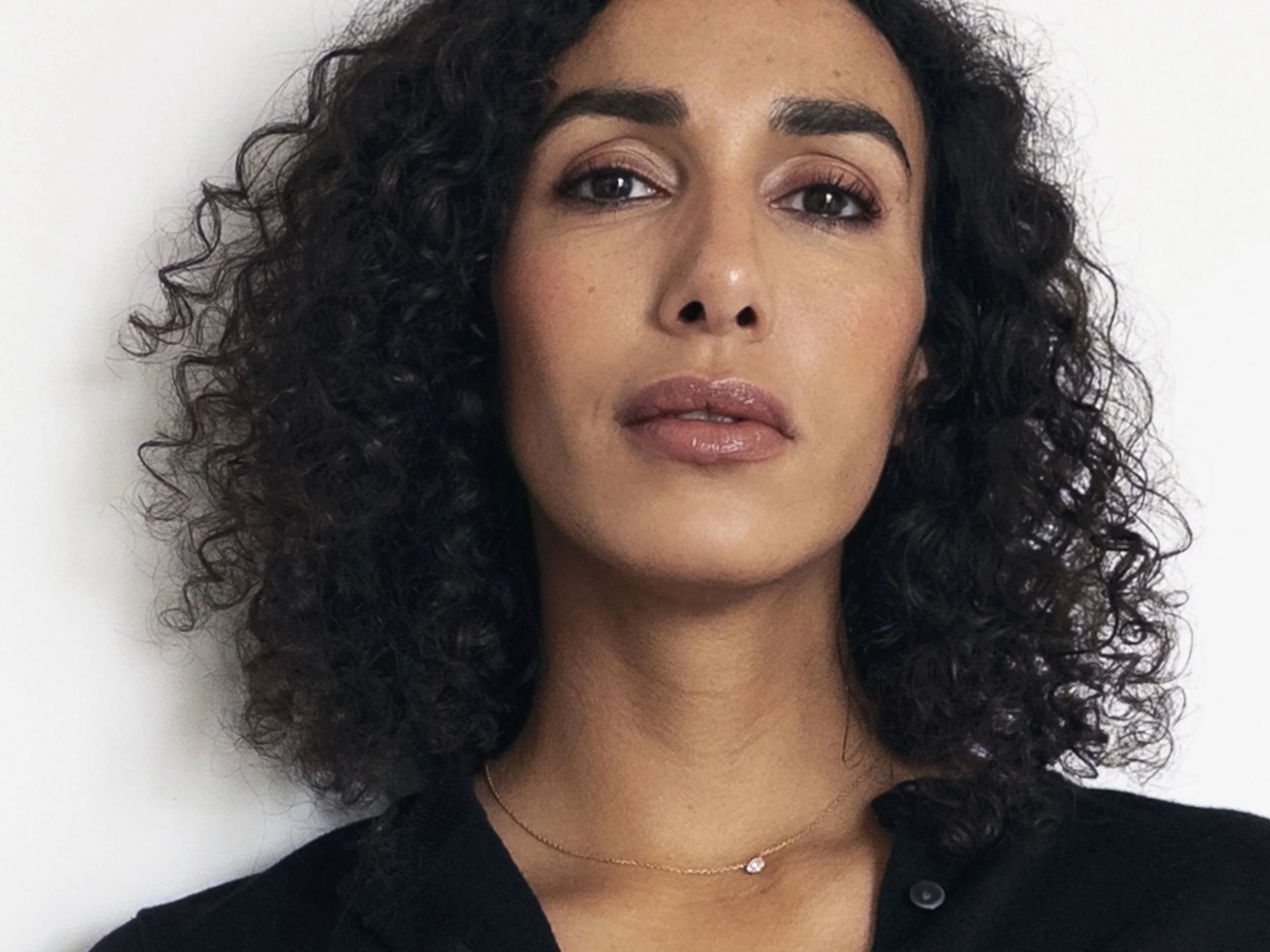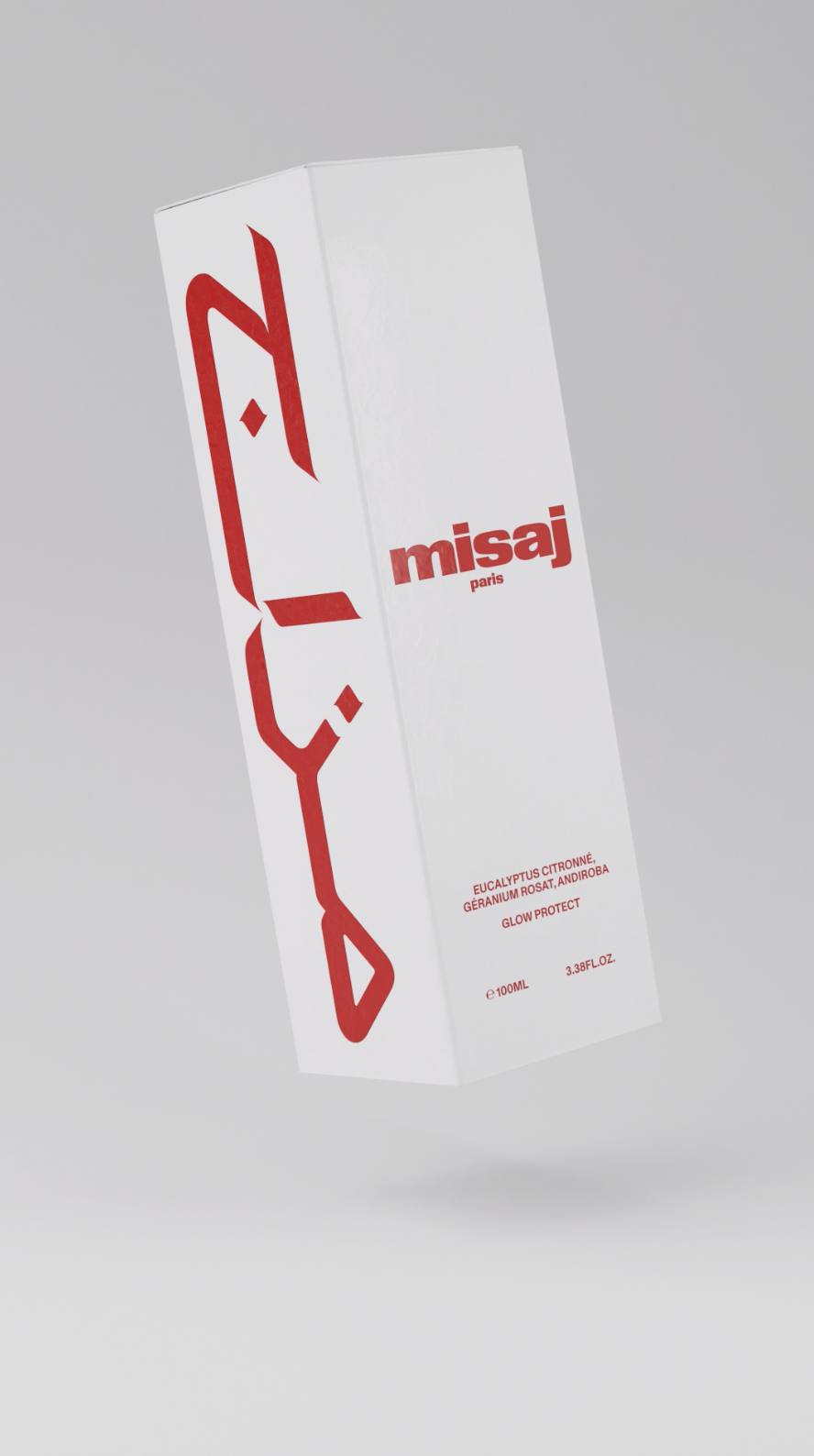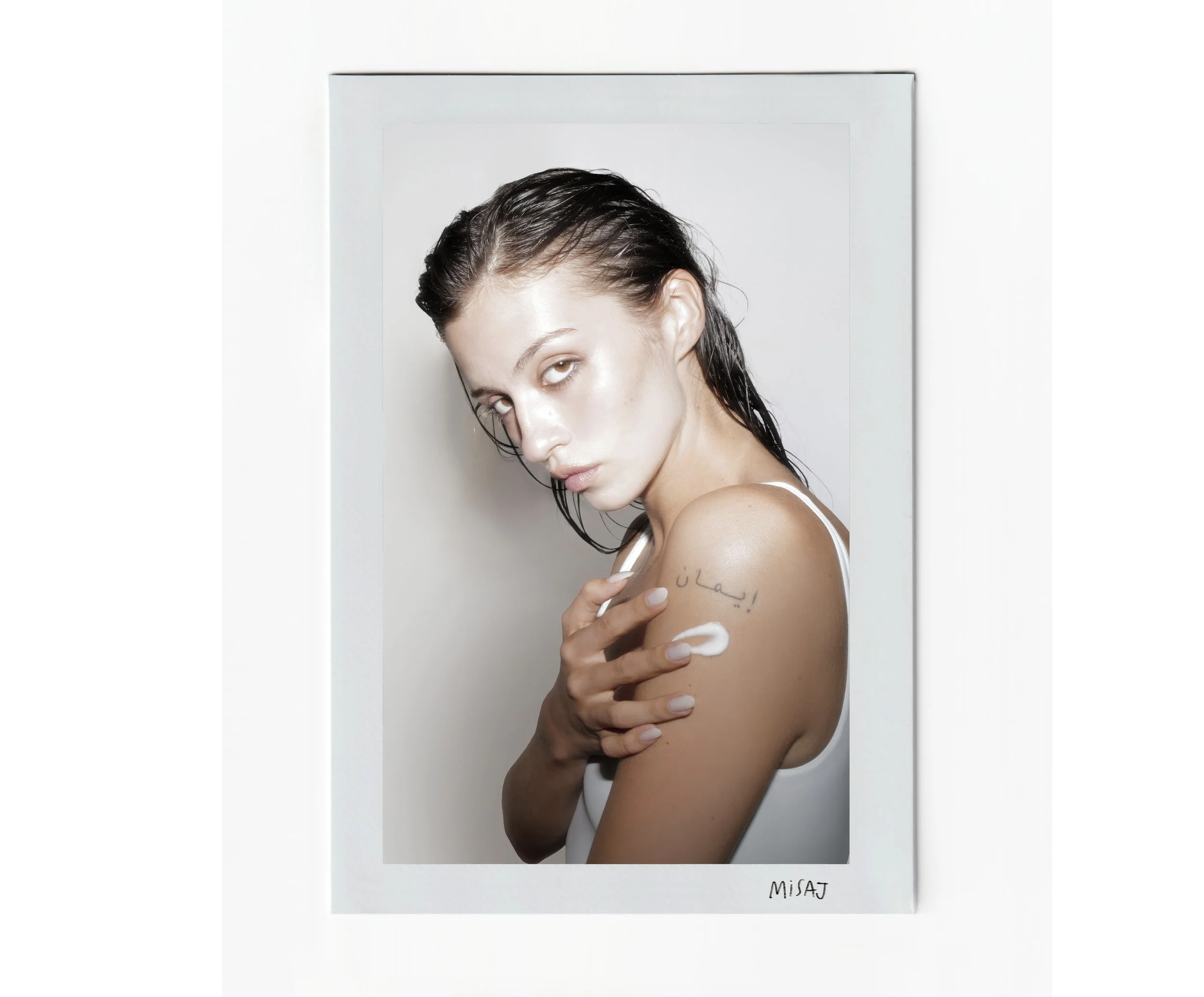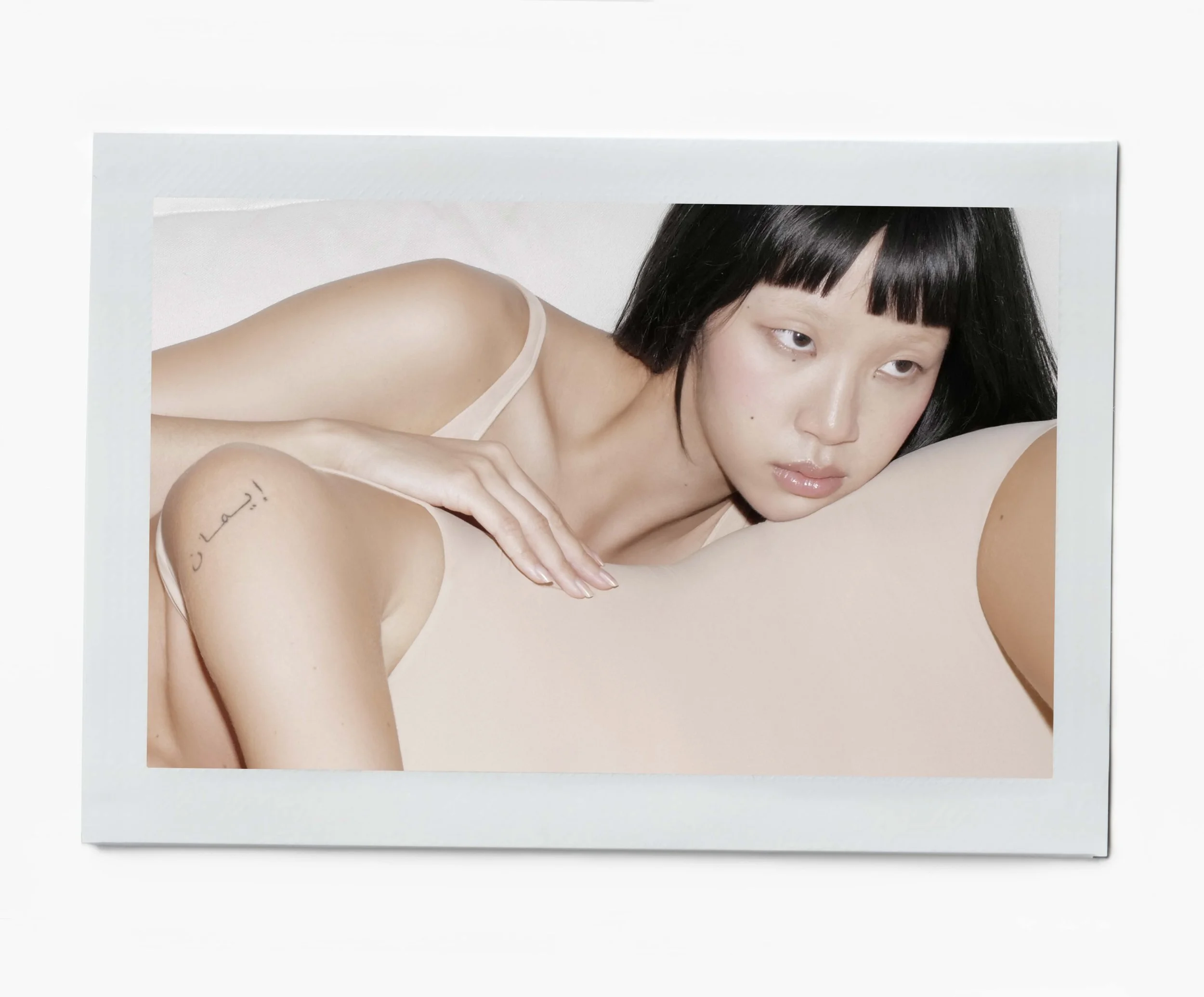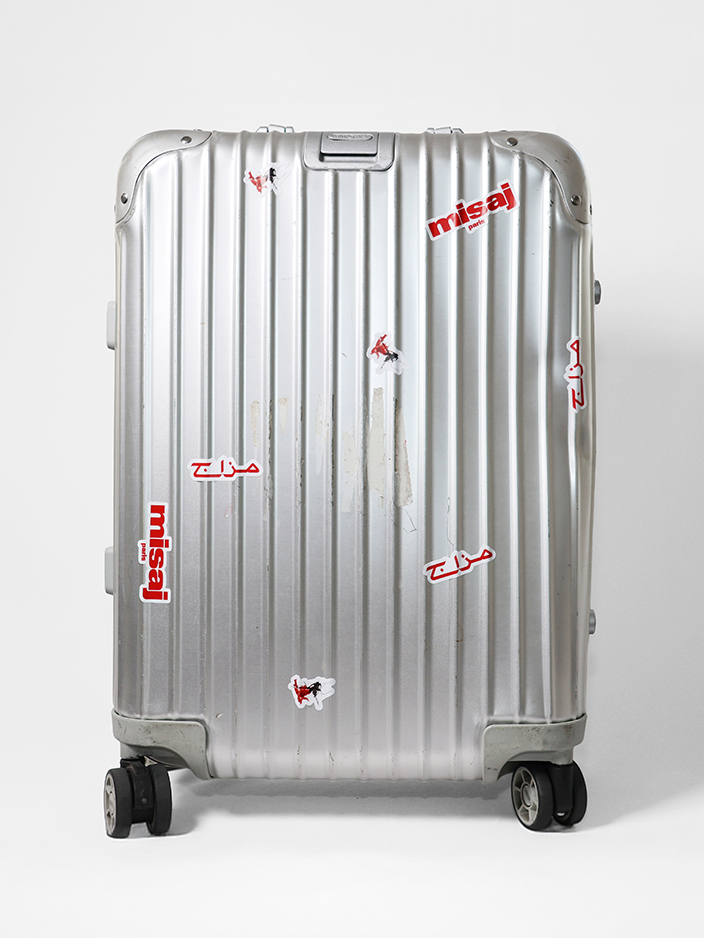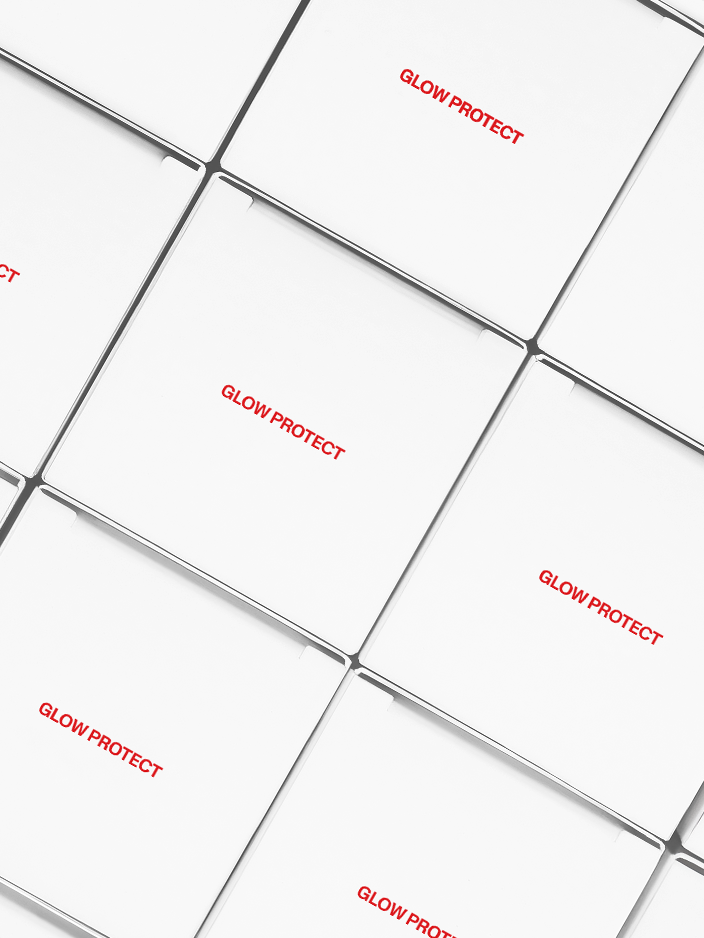Building a New Beauty Category: Inside Misaj's Protective Beauty Revolution
*MISAJ
*MISAJ
Born at the crossroads of cultures, Amèle Moussaoui grew up between her Algerian father's world of modern medicine and her Moroccan mother's universe of traditional Chinese remedies. From her Berber great-grandmother's ancestral wisdom to her studies in pharmacy and career in M&A at McKinsey and Servier, she learned early that healing is more than science: it's a dialogue between body, mind, and heritage.
That dialogue became Misaj, a beauty house translating ancestral intelligence into modern protection. Rooted in Arab heritage and built through French craftsmanship, Misaj redefines skincare in a changing climate, where radiance and defense must coexist. Its debut innovation, Glow Protect, bridges sensorial pleasure and scientific rigor, merging hydration, luminosity, and natural repellent efficacy into one seamless ritual.
For Amèle Moussaoui , beauty is cultural continuity. Misaj's Arabic name, meaning "balance" or "temperament," reflects her mission to reconnect people with their inner equilibrium while honoring traditions often overlooked in luxury. At a time when protection feels as vital as pleasure, Misaj offers a reminder that resilience, too, can be beautiful.
If this article resonated, come inside the Future of Skincare newsletter on Substack. Beauty Signals is the deeper layer within it, weekly patterns where skincare meets culture, for skin intellectuals, beauty anthropologists, and the cosmetics curious. Read the opening free, full access at latte with me level.
Your multicultural heritage, born in France with an Algerian surgeon father and Moroccan Traditional Chinese Medicine mother, guided by your Berber great-grandmother, seems fundamental to Misaj. How did growing up at the intersection of these healing traditions shape your understanding of wellness?
Growing up, I was constantly navigating between worlds. My father was all about conventional medicine; if we were sick, he’d say “take this drug.” My mother, on the other hand, would use essential oils, herbs, or old remedies passed down from my great-grandmother. The convergence of those two approaches made me see health as something deeply interconnected. I learned early on that healing wasn’t only about treating symptoms; it was about finding balance and preventing illness before it appears. In China, my mom always said, people go to the doctor to prevent getting sick, not after. That mindset stayed with me during my pharmaceutical studies and became the premise of misaj.
What was the moment you realized your pharmaceutical background and cultural heritage could create something entirely new in beauty? Was there a specific experience that crystallized this vision?
It all came together after my grandmother’s funeral. I realized that all those recipes, rituals, and healing traditions I grew up with could get lost. I had spent years studying pharmacy, working in strategy and M&A. But what truly moved me was everything I’d learned at home: the plants, the rituals. I was also witnessing both the number of mosquito-born diseases and skin damage dramatically increase in Europe. Having spent most of my life in the south of France, where sun and mosquitoes are part of our daily life, protection was a real struggle, yet I couldn’t find any alternative that felt right. That’s how my search for a way to bring ancestral intelligence into our modern life began.
"Misaj" means wellness in Arabic. How did you arrive at this name, and what does it represent in terms of reconnecting modern consumers with ancestral wisdom?
In modern Arabic, misaj (or masaj) refers to one’s mood or temperament. But in traditional Arabic medicine, it is much deeper, as it defines the unique balance of energies within us, that shapes our wellbeing. It is a word I love, because it captures exactly what I want people to feel: grounded, protected, and connected to themselves. misaj to me is also a cultural bridge. I wanted to celebrate my Arab heritage; our words, our scents, our rituals. When you see Arabic written boldly on the packaging, it is not decoration, but identity. It is a statement that our culture belongs here too.
You transitioned from M&A/PE in pharmaceuticals at McKinsey and Servier to founding Misaj. What aspects of your corporate experience proved most valuable in building a heritage-driven beauty brand?
My background gave me a 360° view on building something solid from scratch, on balancing vision and execution, processing data and identifying patterns. Studying pharmacy taught me scientific rigor, while M&A and consulting gave me structure and how to prioritize what truly matters, without losing intuition. Leading due diligence on multi-billion-dollars carve outs and business transitions across continents definitely taught me a sense of responsibility and ability to work under pressure ; which you definitely need while building your own business. But beyond the process, it also made me more empathetic. Working with people from different cultures and disciplines showed me that empathy is the real foundation of leadership; it is about clarity and trust.
You've described creating a "Cultural Moat" through Arab heritage combined with fashion aesthetics. What responsibility do beauty brands have in preserving and honoring cultural heritage, and how do you ensure your approach remains authentic rather than appropriative in global markets?
This was such an important and stressful topic for me. I was so scared of misrepresenting my culture, but ultimately, I understood that no one is 100% representative of a culture. I am a blend of different cultures. I’m French, Moroccan, Algerian, Arab, Berber ; all at once. That’s my reality. I’m not trying to represent a culture, I’m expressing how it lives in me. Misaj was born from my own story, my own contradictions. I never felt like I fully belonged anywhere, but it became a strength. I realized that immigrants, whatever their origins, form the biggest community of all. I want misaj to celebrate that sense of shared identity. Many of the people I collaborate with come from different places too. The creative process is collective and fluid, built on dialogue, and I think it is why it resonates so well with the community we are building. We all have traditional healing secrets that deserve to be shared and used in our modern life, and while the ingredients and rituals may differ, the intention remains the same.
The concept of "Premium Protective Beauty" represents an entirely new category. What research or market gaps signaled consumers were ready for this dual-function approach, and what resistance have you encountered in challenging established category boundaries like separating sun protection and insect repellent?
The idea came from a simple observation: every summer, I hated choosing between using harsh repellents that felt aggressive and sticky, or hide inside the house ; where mosquitoes still found me. Repellents felt and smelled chemicals. The sensorial aspect was totally ignored, while other products that felt nicer lacked protection. When I started digging more, I realized there was a huge gap. The wellness conversation was evolving, but the beauty industry was still fragmented: hydration here, protection there. I wanted to merge those two aspects. The skepticism honestly fuels me, and often comes from those who don’t understand the emotional connection consumers have with beauty. Even small details, like having Arabic written boldly on our packaging, spark debate; some people ask if it’s a risk. But it’s our identity, and that’s exactly what people love. It makes them feel something real. I think that people are craving products with soul, meaning ; ones that tell real stories and make them feel seen. Overall, the response from consumers has been incredible. Everyone’s obsessed, because it actually provides a solution to a real issue. I didn’t set out to create a new category ; I just built what I personally needed.
Your formulations blend ancestral botanical knowledge with modern science, with ingredients like andiroba, eucalyptus citronné, and atlas cedar. How do you validate traditional remedies against contemporary safety and efficacy standards?
Traditional remedies are what I always go for. And my training as a pharmacist keeps me very strict about safety, evidence and results; it cannot be just one or the other. All of our formulas are made in France, in a lab that follows traceable and sustainable standards across the entire value chain. Our repellent for example, is 98% natural and formulated under the strictest EU standards, which are among the most demanding in the world. We did real-life testing of our product in Thailand, La Réunion, Barcelona, Ibiza, and South of France, because efficacy is a non-negotiable factor. SPF, however, has been trickier. Regulations differ between regions, and some countries still allow filters that are banned elsewhere. Many SPF products have recently even been pulled from shelves for safety concerns. Like many people, I used to feel uneasy about my own SPF routine, which is why it is extremely important for me to create something safe and equally effective.
The repellent market has been dominated by utilitarian products with harsh scents. How did you crack the code on creating something that feels genuinely luxurious while maintaining protective efficacy?
We use repellent because we have to, not because we want to. It always feels like a chore. I wanted to outdate that statement by creating a repellent that would feel sensorial, comforting and desirable. Something you would actually enjoy using. Many people told me they would rather get bitten than to use what’s on the market. But mosquito bites aren’t harmless; they can trigger allergies, strong skin reactions, and even transmit diseases. The chikungunya outbreak in south of France this October confirmed that it isn’t just a tropical issue anymore. Skipping protection is no longer an option. During development, we tested everything ; scent, texture and packaging ; with professionals but also friends, family, and friends of friends. Their feedback shaped every detail. Misaj was built through collaboration; every person who touches the project brings their own sensitivity, creativity and love. I think that’s why it resonates so much.
"Glow Protect" suggests both radiance and defense, two concepts that don't traditionally coexist in skincare. How do you formulate for both aesthetic enhancement and functional protection?
I wanted something that nourishes, protects, but feels almost invisible. Just like your skin, but better. I never found a moisturizer that could blend into my own routine. It always feels heavy, slow to dry, leaves a sticky film. And I am only talking about hydration. Repellents were worse. So I created what I was missing. A highly hydrating cream that leaves your skin soft and luminous, absorbs quickly, never feels sticky, and delivers protection you can rely on. I rarely wear perfume, so the scent had to be subtle and intimate, melting into one’s own skin rather than covering it. The response has been amazing! People love the design, the scent, the texture, everything. We’re still so new (just 2 months old), and yet the way it’s resonating is beyond what I imagined. I’m still processing it all.
Personal routine: What does your own protective beauty routine look like from morning to evening, and how has it evolved based on your research and the practices you grew up with?
I’m actually quite lazy with my routines, that’s why I love multifunctional products. In the morning, I wash my face with rose water, apply a serum, and use a hydrating cream if needed. I’m not the best with sunscreen yet, but that’s precisely why we’re working on it; to create one that is truly easy and pleasant to use. Before getting dressed, I apply misaj on my legs and arms. It hydrates without stickiness, and I’m protected for the day. Plus, everyone compliments me on my skin’s texture and smell. At night, I double cleanse, apply a serum, sometimes a mask, and finish by hydrating my body in bed ; with Glow Protect of course. Once a week, I keep the ritual I grew up with : hammam. I use Beldi soap to exfoliate, remove dead skin, and apply a mask on my face and hair. It detoxes, grounds me, and reconnects me to myself. It’s not just physical; it’s a mental reset, a real pause. Ultimately, my ritual hasn’t changed so much. It’s still about the same thing my mom taught me: taking care of myself with intention.


